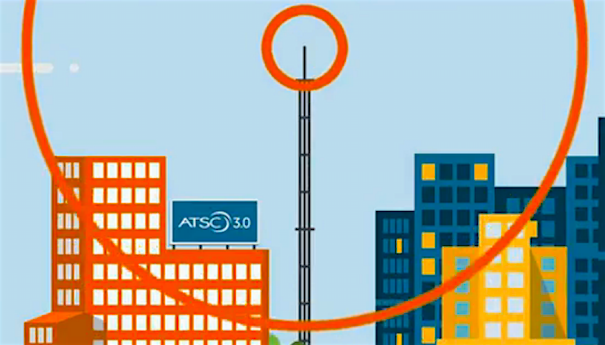
WASHINGTON, D.C.—The FCC has issued an order that modifies its ATSC 3.0 rules to permit multicast licensing and extends the sunsets of the substantially similar rule and A/322 standard through July 17, 2027.
At the same time, the Commission also issued a Notice of Proposed Rulemaking that seeks comment on the current marketplace for ATSC 3.0 Standard Essential Patents.
The FCC order is important because it is designed to make it easier for broadcasters to manage the transition to ATSC 3.0 and was quickly lauded by the National Association of Broadcasters. The NAB is working with the FCC to advance the rollout of NextGen TV, aka ATSC 3.0 and smooth the transition from the current ATSC 1.0 standard to 3.0.
"NAB applauds today's FCC order, which will enable broadcast television innovation. Next Gen TV holds the potential to offer tremendous benefits for viewers,” said NAB president and CEO Curtis LeGeyt in a statement. “To unlock that potential, broadcasters are undergoing a complex and challenging transition. The steps the Commission has taken today – to facilitate the hosting of multicast programming and provide an end date to a rule mandating identical ATSC 1.0 and 3.0 broadcasts – will help make that transition possible. We appreciate the commissioners’ leadership and the hard work of the staff, and we look forward to continuing to work with the FCC to bring the benefits of Next Gen TV to viewers."
In the Order the FCC explained that it was taking the action because “Next Gen TV stations must, without any additional allocation of spectrum, continue serving ATSC 1.0 viewers while voluntarily transitioning to ATSC 3.0.”
Because of those limitation, the FCC added that “we seek to take actions that will minimize viewer disruption as much as possible during this limited transition period. Specifically, this Report and Order seeks to facilitate and encourage partnerships that will minimize potential disruptions by permitting stations in a market to work together to preserve viewers’ access to ATSC 1.0-formatted programming during the transition. We intend simultaneously to facilitate broadcasters’ voluntary transition to ATSC 3.0, which can provide consumers with the benefit of new and innovative services, while protecting the vast majority of over-the-air TV viewers who continue to rely on 1.0 equipment.”
The action also extends “the substantially similar requirement would expire on July 17, 2023, unless the Commission takes action to extend it,” the FCC noted.
The FCC also decided to “retain the A/322 requirement at this time and extend the sunset date to July 17, 2027.”
“We find that the A/322 requirement remains essential at this time for protecting both innovators and investors in the 3.0 space, allowing stakeholders to develop and purchase equipment with confidence,” the FCC said. “As Pearl TV notes, the rule gives `key certainty’ to television receiver manufacturers, affording them the confidence to build Next Gen TV equipment and bring it to market knowing that it will reliably work with 3.0 signals now and in the future. It likewise protects consumer investments in 3.0 technology by ensuring that 3.0 TV sets and other 3.0 equipment they purchase are, and will remain, compatible with primary 3.0 signals.”
In addition FCC issued a Notice of Proposed Rulemaking seeking comment on the current marketplace for ATSC 3.0 Standard Essential Patents.
In seeking comment, the FCC noted that some groups had complained about issues with licensing the patents and urged the FCC to get involved.
“Public Knowledge/Open Technology Institute (PK) goes further, proposing that the Commission should immediately adopt enforceable RAND [reasonable and non-discriminatory licensing] requirements for SEPs [standard essential patents],” the FCC noted. “PK argues that reliance on third party enforcement of the ATSC RAND requirement is insufficient.”
“On the other hand, several other commenters oppose Commission involvement in what they describe as a still-nascent market showing no signs of market failure,” the FCC said. “Other commenters contend that adoption of RAND requirements by the Commission is unnecessary at best and potentially even harmful to the consumer market for ATSC 3.0 devices. We seek additional comment on the state of this market, particularly from the perspective of parties, or the representatives of parties, that do not hold SEPs [standard essential patents] but have licensed or attempted to license them. Are SEP holders complying with the ATSC RAND requirements? If not, how are disputes currently resolved? Are the existing ATSC RAND requirements imposing any adverse economic impacts? Why or why not?”







